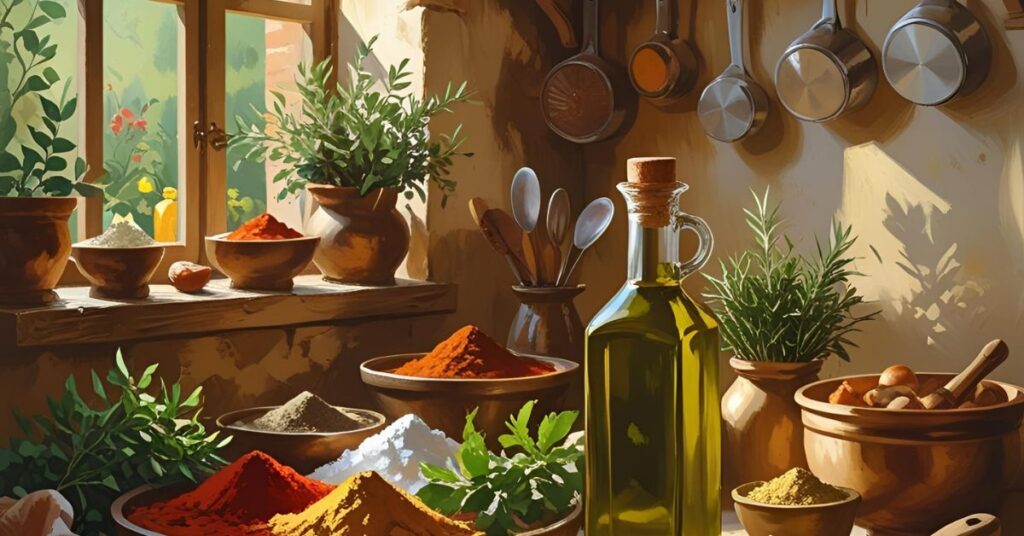
Cooking with Olive Oil: Myths and Best Practices

Olive oil is one of the most beloved ingredients in kitchens around the world. From drizzling it over salads to sautéing vegetables, it’s known not only for its rich, fruity flavor but also for its health benefits. Yet, despite its popularity, there’s still a lot of confusion about how to cook with olive oil—and what not to do.
Let’s clear up the myths and focus on the facts so you can make the most of this liquid gold in your cooking.
Myth #1: You Should Never Cook with Extra Virgin Olive Oil
False.
This is one of the most persistent myths. People often worry that the low smoke point of extra virgin olive oil (EVOO) makes it unsuitable for cooking. While it’s true that EVOO has a lower smoke point (around 375–410°F / 190–210°C) than some refined oils, it’s still perfectly safe and flavorful for most everyday cooking—like roasting, baking, sautéing, and shallow frying.
Best Practice: Use high-quality EVOO for medium-heat cooking. Reserve your most flavorful, robust oils for drizzling or finishing dishes.
Myth #2: Olive Oil Turns Toxic When Heated
False.
Some believe that heating olive oil makes it harmful. In reality, olive oil remains stable under typical cooking temperatures. It contains monounsaturated fats and antioxidants, which make it more resistant to oxidation than many vegetable oils.
Best Practice: Avoid overheating any oil, including olive oil. If it starts to smoke excessively, it’s too hot—turn down the heat.
Myth #3: You Can Only Use Olive Oil for Mediterranean Dishes
False.
While olive oil is a staple in Mediterranean cuisine, it’s incredibly versatile. It can add depth and richness to a wide variety of dishes—from stir-fries and curries to baked goods and even desserts.
Best Practice: Experiment! Olive oil pairs beautifully with ingredients like citrus, garlic, herbs, chocolate, and even vanilla.
Best Practices for Cooking with Olive Oil
✅ Choose the Right Type
- Extra Virgin Olive Oil: Best for flavor, finishing, dressings, and medium-heat cooking.
- Virgin Olive Oil: Slightly less refined; good for all-purpose cooking.
- Refined or Light Olive Oil: Milder in flavor, higher smoke point—good for high-heat applications like deep frying.
✅ Store It Properly
Keep your olive oil in a cool, dark place, away from heat and light. Use a dark bottle or stainless steel container to preserve freshness.
✅ Use It Fresh
Olive oil is not like wine—it doesn’t improve with age. Use within 12–18 months of the harvest date for the best flavor and health benefits.
Find the Best Olive Oils with Mediterrolio
Not sure where to start when choosing a high-quality olive oil? Visit the Mediterrolio Olive Oil Network — a trusted online directory where you can explore top-rated olive oils from reputable producers across the Mediterranean and beyond.
With expert reviews, origin information, and direct links to producers, Mediterrolio helps you find oils that meet your taste and quality standards, whether you’re a home cook or a culinary professional.
Explore, taste, and trust what you’re pouring.
Browse olive oils on Mediterrolio
Easy Ways to Use Olive Oil in Everyday Cooking
- Sauté vegetables in EVOO with garlic and herbs.
- Roast potatoes or root vegetables tossed in olive oil and sea salt.
- Make salad dressings with olive oil, lemon juice, and Dijon mustard.
- Drizzle over soups, grilled meats, or even vanilla ice cream (yes, really).
Final Thoughts
Cooking with olive oil doesn’t have to be complicated. Forget the myths—olive oil is both safe and delicious for cooking, especially when you choose the right type and cook at appropriate temperatures.
And when it comes to choosing the best oils? Let Mediterrolio guide you toward better flavor and authenticity—one bottle at a time.